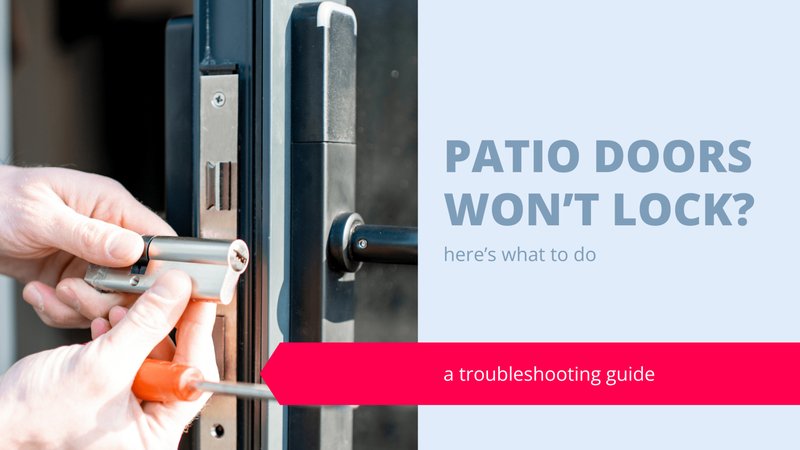
Here’s the thing: most doors aren’t designed with elderly hands in mind. Even popular brands like Schlage, Kwikset, or Yale tend to assume you’ve got strong, nimble fingers. When your grip or dexterity isn’t what it used to be, every extra ounce of force matters. The good news? With a bit of troubleshooting, you can often make an exterior door much easier to use, no matter your favorite lock or handle style.
Why Exterior Doors Get Harder to Use Over Time
You might be wondering how a door that once opened easily is now causing so much trouble. The truth is, exterior doors take a beating. They’re exposed to weather, temperature swings, and lots of daily use. Over the years, humidity can cause wood to swell, hinges can get rusty, and even the best door handles can start to jam.
For elderly hands, even a small increase in resistance feels huge. Let me explain: if you have arthritis or carpal tunnel, your grip strength drops, and twisting motions become painful. If your door needs even a little extra “oomph,” it can be enough to make you avoid using it altogether. That’s why it’s so important to figure out what’s causing the drag before it gets worse.
Some common culprits include:
- Tight or misaligned hinges—The door may sag or scrape the frame.
- Swollen wood—Wet or humid weather can make the door stick.
- Old or stiff locksets—The handle or deadbolt becomes hard to turn.
- Poor lubrication—Moving parts inside the handle or lock dry out and get sticky.
If you’ve noticed relatives grumbling about the door lately, or if you’re the one with a sore wrist, it’s time to get to the root of the problem.
Checking for Physical Obstructions and Door Alignment
Let’s start with the basics before you reach for any tools. Sometimes, the issue is as simple as a shoe or rug blocking the swing—or a buildup of dirt where the door meets the frame. You’ll want a clear view of the hinges and the bottom edge. Are you seeing anything unusual?
If the door seems to drag or not latch smoothly, close it slowly and watch where it rubs. Sometimes, warped wood or a house that’s settled unevenly can make the door misaligned. Hold a pencil up to the gap around the door: Is it even on all sides? If you notice a tight spot, that’s likely your trouble zone.
Here’s a simple trick:
- Open and close the door a few times. Does it get stuck at a certain angle?
- Are the hinges squeaking or flexing?
- Is there chipped paint or wood splintering by the latch?
If the answer is yes, you’re probably dealing with alignment or friction issues, not just a bad handle.
Testing and Lubricating Door Hardware
You might think a stiff lock or handle means you need a whole new set, but often, it’s just a matter of lubrication. Over time, dust and grime work their way into the moving parts. For brands like Kwikset, Schlage, or Yale, you’ll want to use a silicone spray or graphite powder—not oil, which can gum things up.
Try this step-by-step:
- Work the handle several times to “feel” where the stiffness is—handle, latch, or deadbolt?
- Spray a tiny bit of graphite or silicone into the opening around the latch and keyhole.
- Wipe away any drips, then operate the lock and handle repeatedly to distribute the lubricant.
- If you hear grinding or the key still sticks, it might be time to consider a hardware reset or replacement.
Sometimes you’ll notice a big difference right away—as if your door hardware got a fresh battery. But if things aren’t improving, don’t force it. Forcing a stiff lock can break the internal code (mechanism), making it harder for elderly hands to use.
Adjusting Hinges and Tightening Loose Screws
Loose or rusty hinges can make any door feel heavier than it should. When a door sags, the latch won’t line up right, and every turn of the handle feels like lifting weights. If you hear creaks or see the door dragging, it’s time to check those hinges.
Here’s how to troubleshoot:
- Look for loose screws—Tighten them with a screwdriver, not a drill, to avoid stripping.
- Add a drop of lubricant—Just a little on each hinge pin, then swing the door back and forth to work it in.
- If a hinge is bent or rusty, replace it with a sturdy one from the hardware store (they’re inexpensive).
- Check for sagging—If the door droops, try shimming the bottom hinge or swapping in longer screws for extra support.
Think of this like tuning a guitar. Small tweaks can bring everything back into harmony—and suddenly, opening the door is smooth, not a feat of strength.
Swapping Out Difficult Handles or Locks for Easier Options
Let’s face it, some exterior door handles just aren’t friendly to aging joints. Classic round knobs or stiff thumb-latches are a nightmare when your grip isn’t what it used to be. If you—or a loved one—find it painful to twist or pull, swapping hardware is one of the best upgrades you can make.
There are lever-style handles designed exactly for this sort of thing. Instead of twisting with your fingers, a lever lets you push down with your palm, forearm, or even elbow. Many Schlage, Kwikset, and Yale models offer lever upgrades that fit standard doors, so you usually won’t need to do any fancy retrofitting. Make sure to pick a model rated for exterior use and consider a finish that won’t get slippery in the rain.
When switching to an easier handle:
- Measure your door thickness and backset (distance from edge to handle hole).
- Pick a lever with a broad, textured grip—avoid tiny or overly smooth models.
- Follow the included sync or pairing instructions if you choose a smart lock with remote control.
Honestly, this small change can make a world of difference—like trading in an old manual crank for an automatic window opener.
Weatherproofing and Seasonal Solutions for Elderly Hands
A lot of door trouble starts when seasons change. In summer’s humidity, wood can swell; in winter, cold air can stiffen parts and make them feel brittle. For seniors, a door that’s suddenly harder to open can be dangerous—not just inconvenient—especially if it means fumbling with a stubborn lock in the cold.
Look for signs the weather’s making things worse:
- Does the door only stick after it rains? Does the lock freeze up on frosty mornings?
- Is the threshold warped, or is water pooling around the bottom of the door?
To troubleshoot these seasonal headaches, add or replace door sweeps and weatherstripping. This not only keeps drafts out but also helps your door swing and latch more easily. For locks, keep a can of lock de-icer handy in the winter and avoid forcing frozen keys—you’ll risk breaking the mechanism.
If you find yourself constantly doing seasonal “troubleshooting,” it may be time for a more permanent fix, like installing a composite or metal-clad door that doesn’t warp as easily.
When to Call for Professional Help
Sometimes, no amount of DIY troubleshooting is enough. If the door is seriously warped, the lock is broken beyond a simple reset, or you suspect the frame itself is rotting, it’s smart to call in a pro. Elderly hands shouldn’t have to wrestle a door every day just to get outside.
A locksmith can help with:
- Realigning or replacing locksets
- Installing easy-grip levers and hardware
- Upgrading to remote or battery-powered smart locks (great for hands-free access)
A carpenter might be needed if the door frame is sagging or damaged. Sometimes, a new door is the only answer—and the right pro can guide you through picking something safe, easy to use, and secure.
Even though DIY fixes solve most exterior door troubles, sometimes peace of mind is worth the investment. No one should dread coming and going from their own home.
Simple Daily Habits to Keep Exterior Doors Accessible
Once your door is working better, a little routine maintenance goes a long way. Here are a few habits that help keep things trouble-free, especially for seniors:
- Wipe down the handle and threshold every week to keep dust and grit out of the moving parts.
- Operate locks and levers gently—don’t slam or force them.
- Sneak a squirt of silicone or graphite lubricant into the latch and hinges every season.
- Check weatherstripping and door sweeps for wear—and replace as soon as they start to peel or crack.
Think of it as “pairing” your door with good habits—like syncing your phone. A few small steps can make all the difference for elderly hands, turning the door from a daily challenge into a smooth part of life.
Closing Thoughts: Keeping Home Access Easy for Everyone
Getting an exterior door to work well for elderly hands isn’t just about comfort—it’s about keeping independence and dignity intact. Every little fix, from lubricating a sticky hinge to choosing an easy-lever handle, helps make daily life easier and safer. Whether you’re troubleshooting a beloved old Schlage or upgrading to a smart Yale remote lock, the solutions are often simple but make a real impact.
If you’re caring for an older family member or looking for ways to age in place, don’t wait until the door becomes a major obstacle. With a bit of regular attention and some smart upgrades, the front door can stay just as welcoming—and easy to open—as ever.
